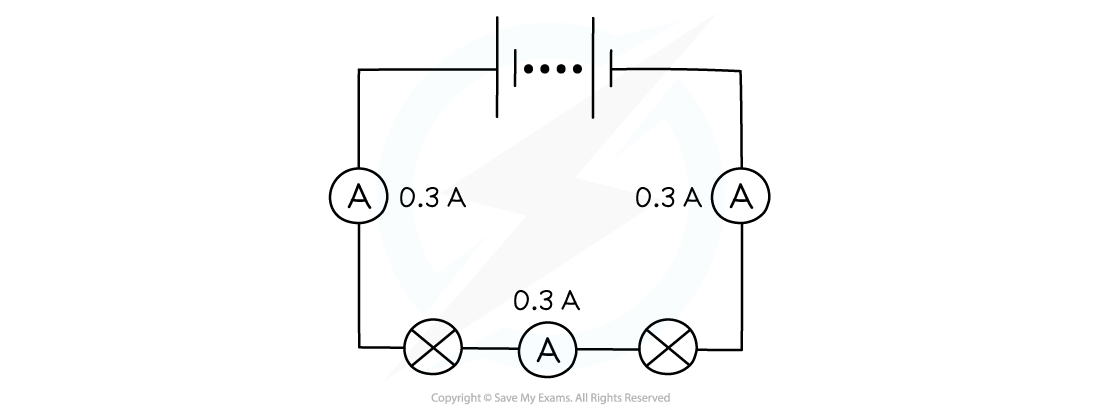Electric Current
- Electric current is defined as the rate of flow charge
- In other words, the size of an electric current is the amount of charge passing through a component per second
- The wires in an electric circuit are made of metal, because metal is a good conductor of electric current
- In the wires, the current is a flow of electrons

In metal wires, the current is a flow of electrons. This image shows the electrons flowing through a lattice of metal ions
Measuring Current
- The amount of current flowing through a component is measured using an ammeter
- Ammeters should always be connected in series with the part of the circuit you wish to measure the current through

An ammeter can be used to measure the current around a circuit and is always connected in series







 What is the reading on ammeter A2?
What is the reading on ammeter A2?
